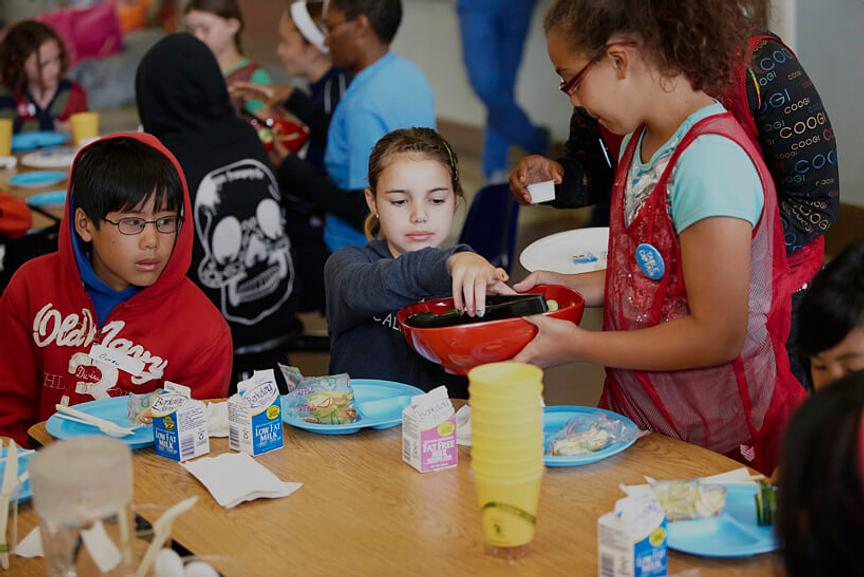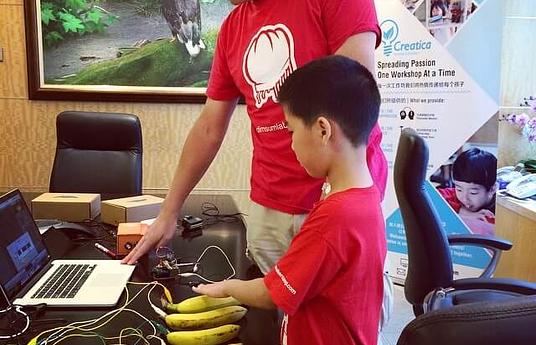For many students, lunchtime is the most important part of the school day. It’s the time when they have free time to catch up with friends. However, budgetary restraints often lead school districts to consider school cafeterias as an industrial style distribution system.
Students line up as if on a conveyor belt and wait as their food is doled out to them. Waiting times are frequently long and the atmosphere can be sterile as students are churned through the process. Students do not want to miss out on time with their friends and so may choose to skip lunch altogether which can lead to unhealthy habits, food waste and financial deficit.
San Francisco Unified School District (SFUSD) and the Sara and Evan Williams Foundation (SEWF) collaborated with IDEO to improve the lunchtime experience for students while maintaining efficiency and working with existing legislation. SFUSD’s first move was to hire Revolution Foods which provides some of the healthiest school meals in the USA. Though Revolution Foods provided a significant improvement in food options, students were still rushing to leave the cafeteria or skipping lunch altogether.
IDEO realized that they needed to design the school cafeteria system around the needs of the students. To achieve this, they sought the views of 1300 students, lunch workers, teachers and parents to inspire the design of a new lunchtime experience. Students of all ages and from a wide range of cultural backgrounds kept food journals detailing the foods they liked as well as those they ate at home.
The vision for student-centered lunches is designed to support students in making healthy food choices all through their school career, and vary depending on the age of the student . In elementary schools, healthy rituals are established early and developed by increasing student choice as they get older. The Future Dining Experience team is currently designing the built environment of elementary sites in order to allow for a future where students sit together and serve one another food to help foster a greater sense of community.
In middle schools, children can choose where they want to sit from a variety of different zones. There are shared tables and sofas and students can choose to eat alone, outdoors or in a group, and students can influence the type of seating and “zones” offered by the schools. Understanding the school community is key when selecting furniture. Some middle schools can handle soft seating due to strong leadership and student buy in. Others find creative ways to cut them. There is also a grab and go option provided at mobile carts, full meal vending machines and cafe windows so that students can quickly get back to their friends instead of waiting in long lines.
In high school, students are offered various points of sale. As well as the traditional cafeteria, there are mobile carts, cafe windows and vending machines with healthy foods throughout the school. To prepare students for independence after school, IDEO conceptualized a digitally-enabled system for students to pre-order their food online and find out the nutritional value of their lunches, enabling them to make informed and empowered choices about their food. This concept has not come to fruition yet, however the team is still working towards the vision, streamlining operations and improving the technology infrastructure of the Student Nutrition Services department.
The scope of the student-centered cafeteria is not limited to lunchtime. Learning links are made with educational lessons in school gardens. Students are also able to participate in cooking classes led by school partners to learn how to cook many of the meals they eat during the lunch period.
The Future Dining Experience, a grant funded project that is embedded within SFUSD’s Student Nutrition Services department has led the implementation of the design recommendations for the last four years. Designs have been iterated on in order to best support the needs of the students and operate within a large scale institution. The FDE team regularly meets with students and invites the school communities to participate in the design of their spaces. The FDE is always learning from the design experiences and identifying ways the system could be further improved.



